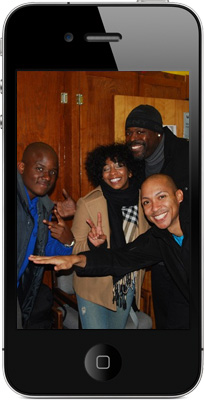clockThis article was published more than 9 years ago
If you’re ready for some good news about racial progress, look to American colleges.
Peter Hinrichs, an economist at the Cleveland Fed, recently pulled data on racial composition at four-year colleges from 1968-2011. In a draft of his report, he illustrates just how far American colleges have come.
There are a couple different ways to think about segregation in U.S. colleges. One approach is to ask: How are blacks represented in colleges that white students attend? These four charts show the evolution over the past 40 years:
In 1968, nearly 30 percent of white college students attended schools that were less than 1 percent black. On average, white students attended schools that were 2.3 percent black.
By 1982, the picture had changed dramatically, and these days, white students go to colleges that are 10.2 percent black, on average. (Overall, in 2012 black Americans made up 14.2 percent of the U.S. population.)
Hinrichs plots the evolution of those averages over time to give us a sense of how the average white college student’s experience evolved through the decades.
White exposure to blacks increased quickly in the 1970s. In the ’80s and ’90s, it plateaued around 6 percent — that is to say, on average, white students attended colleges that were 6 percent black. This figure began to climb again in the 2000s.
In the South, meanwhile, the colleges have become far more mixed since the early ’70s. In 2011, a white student in the South went to a college that was nearly 15 percent black, on average.
Hinrichs also does the opposite calculation: How black are the colleges that black students attend?
These charts give a better picture of how colleges became integrated. In 1968, black students either attended historically black colleges or they were in the minority at overwhelmingly white colleges. That’s what the two humps on the histogram show.
Gradually, the white colleges became more diverse, and a smaller fraction of black students chose to attend HBCUs.
It’s important to keep in mind that more black students have been going to college in the past few decades. Hinrichs reminds us that they were about 5.5 percent of four-year college students in 1968, and 13.9 percent in 2011. With a few notable exceptions, the HCBUs have not integrated substantially — they’re still majority-black institutions.
But because there are many more black college students today than there were 40 years ago, HBCUs enroll a smaller fraction of the black college population.
Looking at the trends by region, it becomes obvious how segregated colleges in the South were. In 1968, black students in the South attended a college that was less than 20 percent white, on average.
This chart also reveals how segregated colleges in the South still are, at least from the perspective of black students. Black students in the South attend colleges that are much blacker on average than do black students in other regions.
How can that be, if, as we saw above, white students in the South also attend colleges that are blacker than anywhere else? These are not contradictory observations. These two statistics reflect that there are many more black students in the South than in other regions, and that there still could be a lot more integration.
Hinrichs goes on to calculate several other measure of segregation, but the story is the same: American colleges have become more mixed than ever. It took a great deal of hard work, but there has been progress.









More Stories
Midtown announces AP African American Studies for upcoming year – the Southerner Online
Wearing black badges in protest against Waqf Bill, 24 people in Muzaffarnagar asked to furnish a bond of 2 lakh each – Hindustan Times
Black veterans sound the alarm over military DEI purge – The Hill